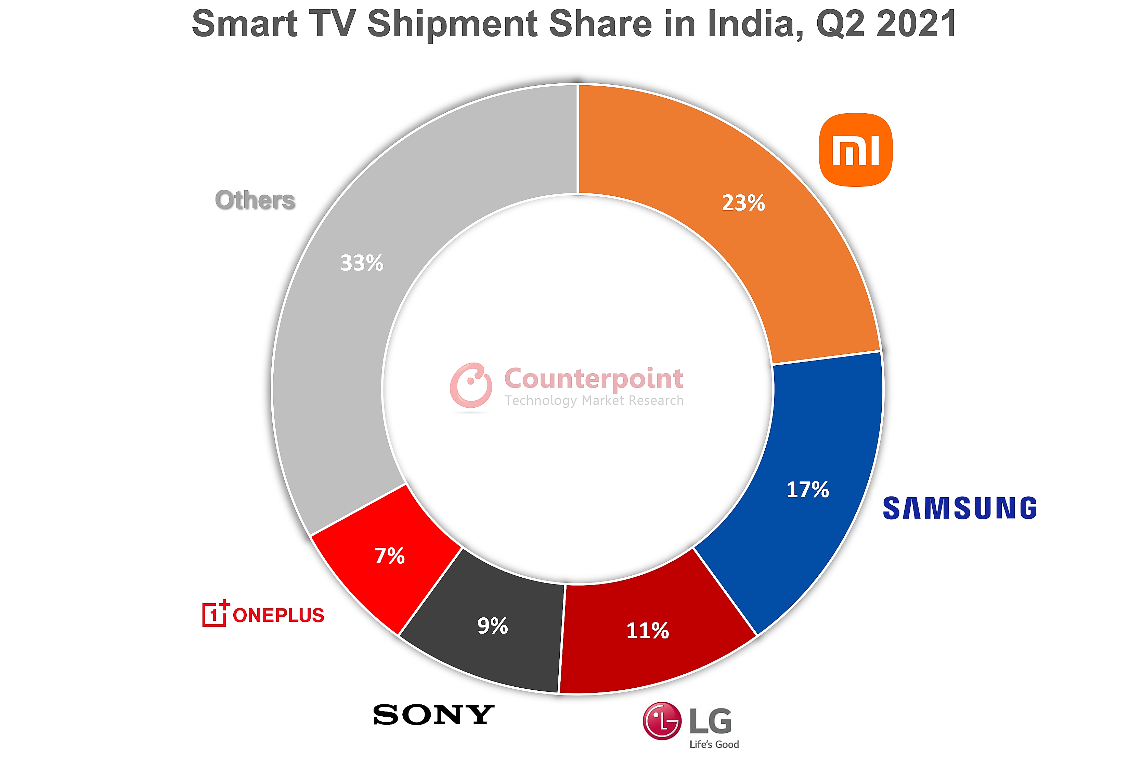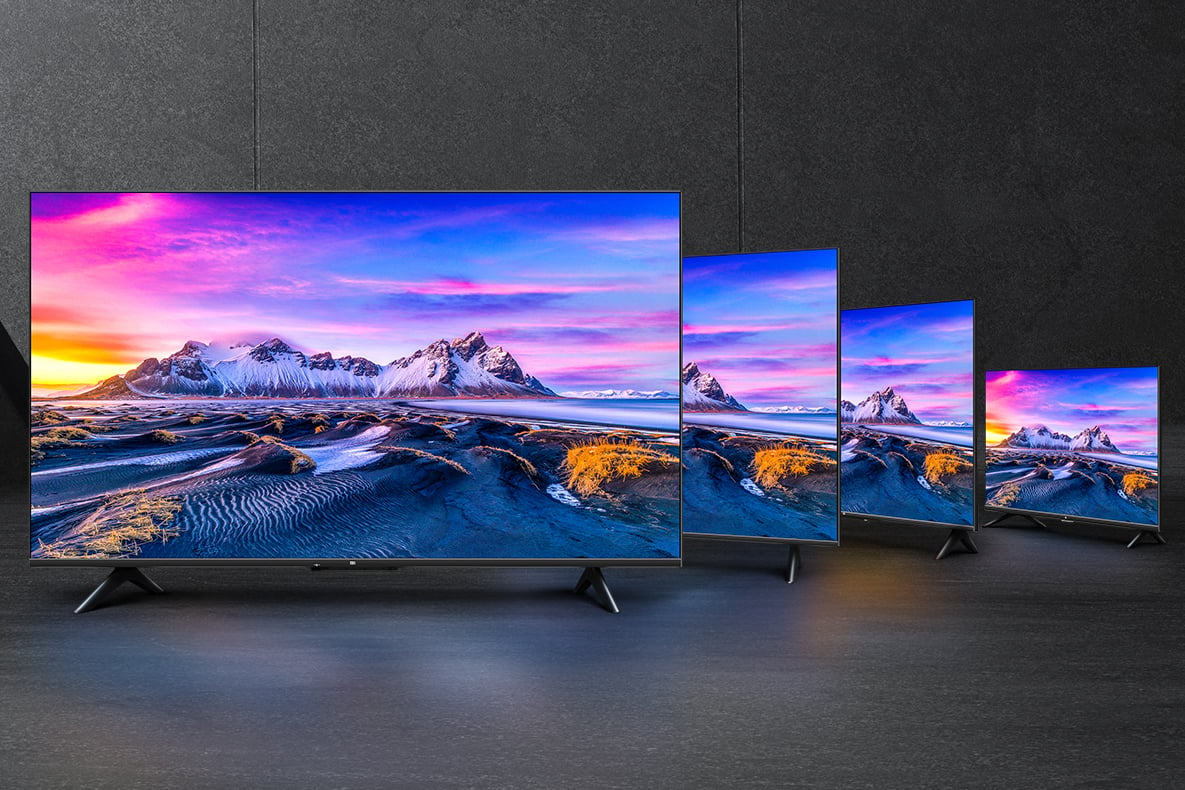Since entering the Indian smart TV market in 2018, Xiaomi has cemented its place in the market as the leading brand, edging out Samsung who had held sway for several years before the emergence of the Mi brand. Last year, Samsung made a push for more market share with the release of multiple models spread across different price segments. Apparently, the Korean giant’s effort is still not enough as the latest report by Counterpoint Research’s TV Tracker Service for the second quarter of 2021 shows that Xiaomi still controls India’s smart TV market.
The report shows that the smart TV market in India grew 65% YoY in Q2 2021. This is attributed to an increase in the demand for smart TVs. This has subsequently led to an increase in the number of smart TVs in their portfolios.
Xiaomi, with a 23% share leads the market and is closely followed by Samsung with a 17% market share. LG occupies the third position claiming an 11% share with Sony at the 4th spot having cornered a 9% market share. The top-five is completed by OnePlus which raked in a 7% market share, recording a 20% QoQ growth.
The report also shows that the non-smart TV market grew 46% YoY in Q2 2021 but the growth is being hampered by the smart TV segment, taking an 80% share of the overall TV market during the quarter.
Despite failing to control the smart Tv market, Samsung leads the overall TV market propelled by the entry-level T4000 series which emerged as the main volume driver in Q2 2021. In addition, the 2021 version of the Crystal series influenced the brand’s market presence. Further, Samsung’s QLED TV business saw a 400% YoY growth in the quarter.
Speaking about India’s TV market, research Associate Debasish Jana stated, “India has always been a very lucrative market for TVs. With a large installed base of CRT and non-smart TVs, the country holds great potential for the growth of the smart TV segment.”
Jana added, “During the COVID-19 lockdowns, people were forced to remain at home for longer periods, resulting in a spurt in the demand for home entertainment, which in turn made the smart TV more popular in the country. Besides, OEMs are offering smart TVs with high specifications at very competitive prices, attracting consumers even more towards the smart TV.”
The rise in prices of panels (or open cells) and other TV components, along with chip shortages, in the global market, is keeping OEMs under pressure and we expect some price increase by a few top TV brands in the country. However, the Indian TV market is growing at a faster pace and is expected to reach the pre-pandemic level by early 2022.
RELATED:
- Google opens its first ever physical retail store in New York City
- United Kingdom starts investigation of Apple and Google’s duopoly in mobile ecosystem
- It’s official: Honor phones will have Google Mobile Services
(source)








